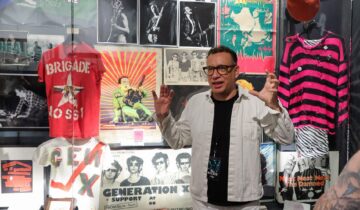 For the ECONOMIST: FOR those with insatiable appetites for music, digital streaming seems like a dream come true. Music fans can simply select artists and genres, and then press play. They see what other fans listen to, and consume a seemingly endless supply of tunes. Digital music services are like 24-hour all-you-can-eat (and whatever-you-want) restaurants of sound.
For the ECONOMIST: FOR those with insatiable appetites for music, digital streaming seems like a dream come true. Music fans can simply select artists and genres, and then press play. They see what other fans listen to, and consume a seemingly endless supply of tunes. Digital music services are like 24-hour all-you-can-eat (and whatever-you-want) restaurants of sound.
And yet the digital music landscape continues to narrow. Independent providers that once served a broad range of artists and fans have been snapped up by big companies with deep pockets and ties to major labels. Google has owned YouTube—named the number one music-streaming platform since 2006. In February, YouTube spent $8m to acquire BandPage, a San Francisco start-up that helps artists sell merchandise, concert tickets and fan experiences. In 2014, Beats Music, a subscription-based streaming service, bought Topspin Media, another innovative platform that helped artists sell merchandise and albums directly to fans. A year later, Apple bought Beats Music (along with Beats’ electronic-gadget business), and then discontinued the streaming service when it launched Apple Music. MySpace, after its decline as a social network, lingered on as a place for artists and fans to meet; Time, Inc bought its parent company earlier this year.
As long as people keep buying iPhones, Apple will have the cash to experiment, and to buy up rivals, as long as it likes. The same applies to Google and YouTube. So what does the future hold for music services whose parent companies don’t make market-leading music hardware or market-leading search and video-streaming services?
Spotify is positioned in the middle, between the mammoths and the remaining few independents. To the small fry, Spotify is huge: earlier this year, the streaming and subscription service—with its 30m subscribers —raised $1 billion in debt financing, on top of the previous $1 billion raised in several rounds of equity investment. Analysts say Spotify is probably planning an acquisition of its own, and aiming to go public. Chandler Coyle, a music industry consultant and online educator for the Berklee College of Music, says, “They took the money, so they have to try. There’s no turning back.”
SoundCloud, launched in 2007 by two musicians, now has roughly 175m users. It has built a solid reputation for allowing for remixes, mash-ups and commenting features that proved popular for artists as well as fans. In a bid to get more competitive with the likes of Spotify and Pandora, SoundCloud launched a subscription service that features downloads for offline listening, and a bigger music catalogue made possible through label licensing deals that took several years to finalise. But the company has been sued for not paying royalties, leaving critics asking how SoundCloud will move from upstart to a proper contract-bound streaming service without losing the community spirit that attracted users in the first place.
8tracks, with its pleasingly-retro name, is either the biggest of the smalls, or the smallest of the medium-sized. Each month, approximately 5m people—mostly university students—use the crowd-curated radio service, whose biggest competitors are Pandora and iHeartRadio. About two-thirds of its (heavily electronic) music is from independent artists and providers like INgrooves, CD baby and TuneCore. It is also crowdfunding, raising money by selling equity to its loyal users; in surveys they have already pledged $30m, according to its founder, David Porter.
The odds are long. Why does 8tracks keep at it? Pandora has never turned a profit since going public in 2011—last week an investor encouraged the company to sell itself. Mr Porter says 8tracks has music from all over the world being packaged by users who feel those tunes are underrepresented elsewhere. Competitors tend to offer more cursory dives into genres. Music is packaged by themes—like breakup music—or activities like working out, sex, or studying for exams. 8tracks playlists aim to tell a story or encapsulate a moment in time. “The middle class in streaming is largely gone now,” says Mr Porter. “If we can get to profitability, we can control our destiny, to a certain extent.”
What happens next? Those surviving will continue to diversify their offerings to grow as much as possible. Just last week, Spotify began offering video content. In 2014, Spotify also launched in the Philippines, Brazil and Canada, with presence now in 58 markets, and established dozens of partnerships to get its Spotify Connect technology in devices. And yet, its losses are growing faster than its income.
The only hope for Spotify—as well as SoundCloud and 8tracks—is to offer something besides a massive catalogue; they can never outspend Apple or Google. But they can help fans—and super fans—get more connected with artists in myriad ways. There is a lot of potential revenue at stake: in 2013, Nielsen, a research company, found there could be potential incremental revenue of $450m to $2.6 billion if artists, managers and labels offered a better set of products and experiences to fans. “There has to be someone smart enough at Spotify to figure this out,” Mr Coyle says. “Beyoncé drops ‘Lemonade’ on Spotify, and I listen, but then what? There’s no ‘Lemonade’ T-shirts, no information about a small tour, and no real fan connections.”
Image courtesy of kaboompics



